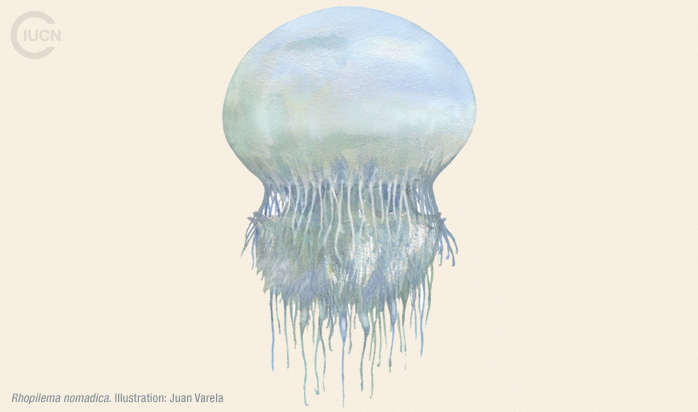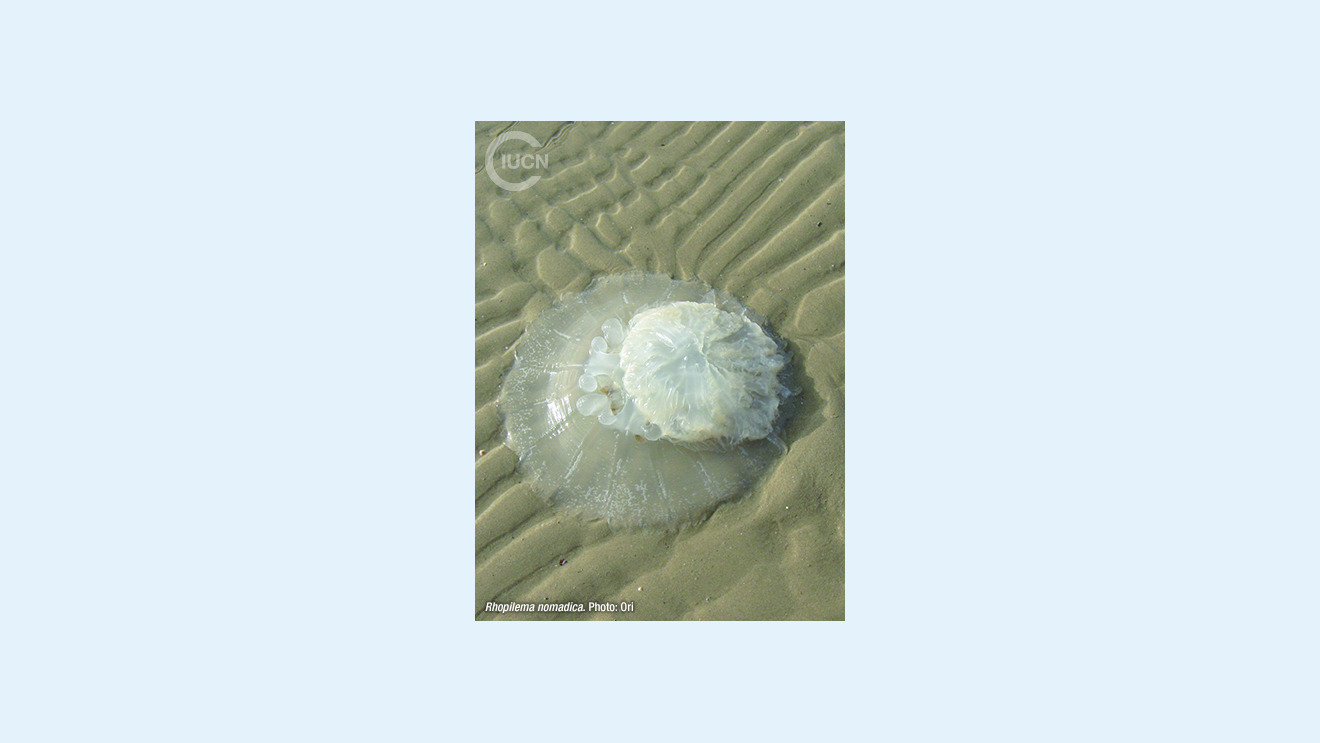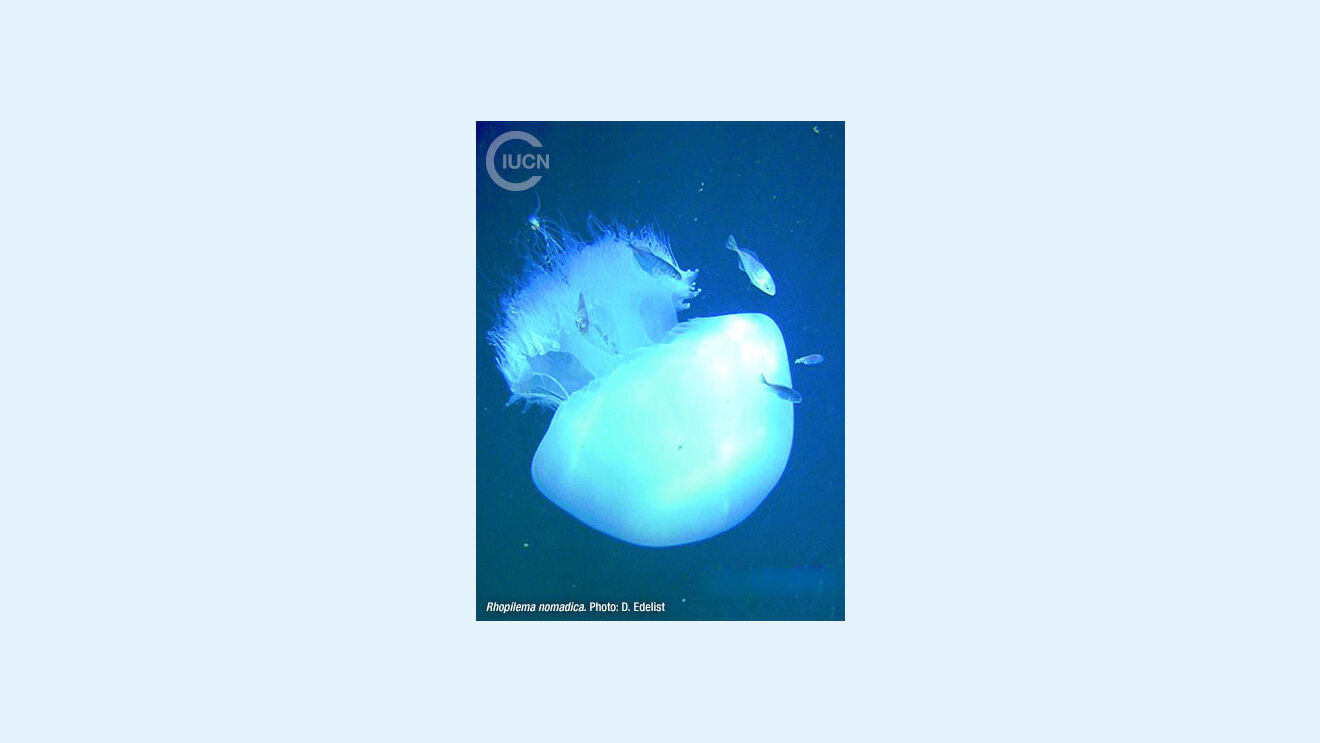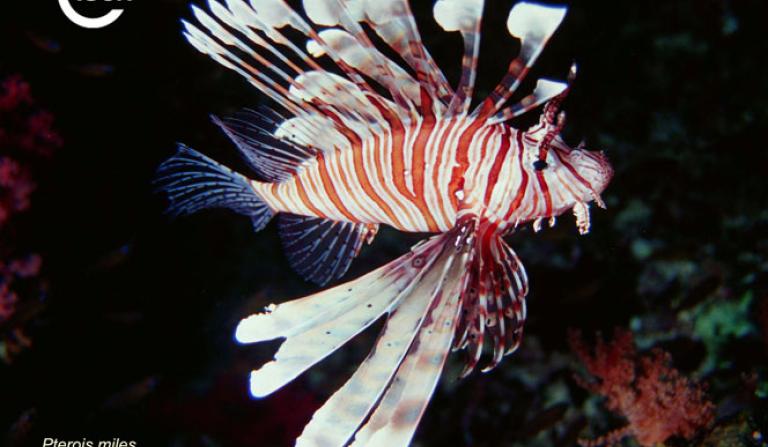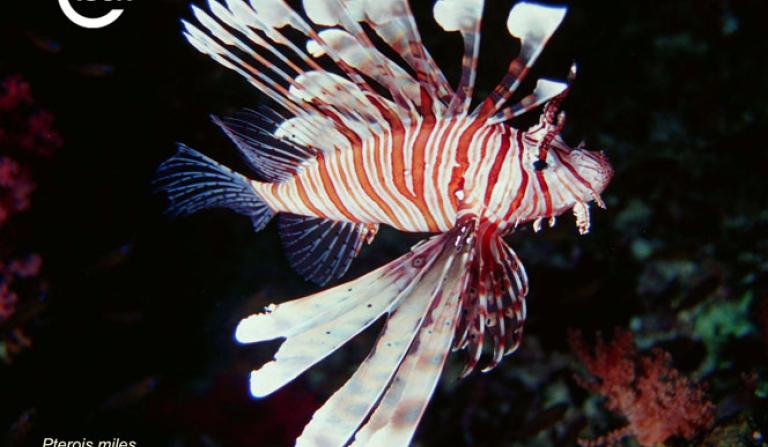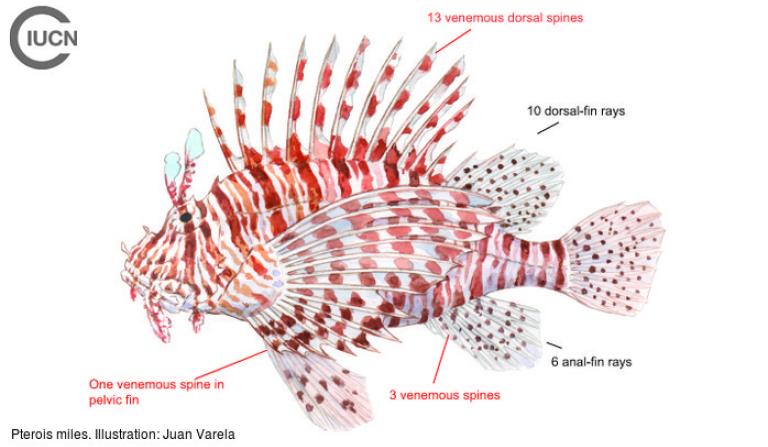Rhopilema nomadica
Information
This species can form dense aggregations in coastal areas during summer months, although it can also appear all year round.
Its life cycle involves a small (usually < 2 mm) benthic polyp stage that reproduces asexually, and a large swimming medusa stage that reproduces sexually. Spawning usually occurs in July and August.
The most similar jellyfish is the native Mediterranean Rhizostoma pulmo. It differs from Rhopilema nomadica in its smooth bell surface and a dark purple band around its undulated margin. It has four pairs of very large mouth arms on its under surface but no tentacles.
Another common native species is Pelagia noctiluca. It is much smaller and mushroom-shaped, with a bell up to 10 cm in diameter. The medusa varies from pale red to mauve-brown or purple in colour and the bell surface is covered in pink granules. It has eight tentacles, pink in colour. The mouth arms can be 5 times the bell height.

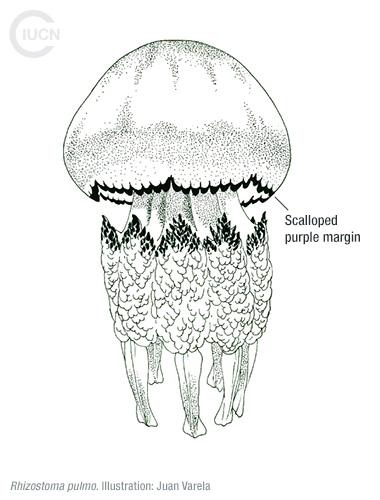
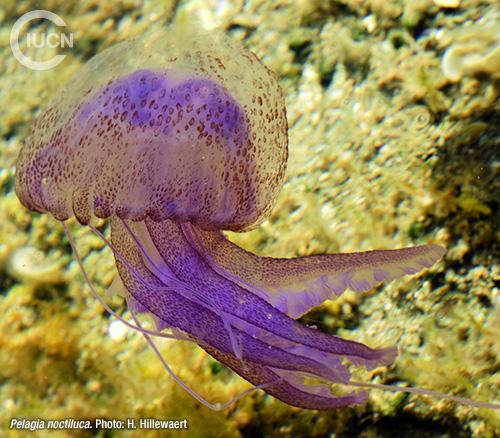
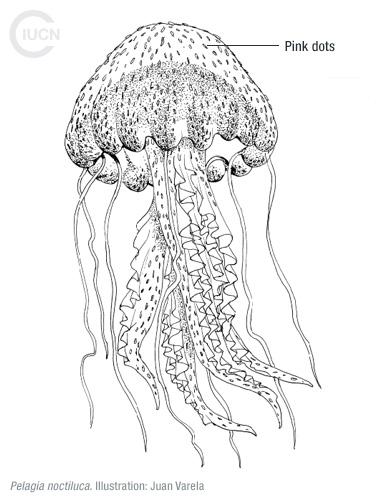
Originally from East Africa and the Red Sea, R. nomadica entered the Mediterranean through the Suez Canal, and spread with the currents along the Mediterranean coasts. Since the mid-1980s large swarms of this species have appeared along the coasts of the Levant every year, from Egypt to Turkey.
The nomad jellyfish is a voracious predator that consumes vast amounts of shrimp, mollusc and fish larvae, and can cause major trophic cascades in the marine food web, with a resulting impact on biodiversity.
This jellyfish can inflict painful injuries to bathers and affect coastal tourism. Furthermore, large swarms can clog fishing nets, consequently reducing catches, and block cooling water intakes of coastal industrial facilities and desalination plants.
Deidun A., Arrigo S., Piraino, S. 2011. The westernmost record of Rhopilema nomadica (Galil, 1990) in the Mediterranean – off the Maltese Islands. Aquatic Invasions Vol 6, Supplement 1: S99–S103.
